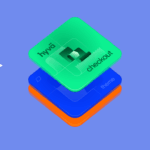RSA
RSA is an asymmetric cryptographic method for the encryption and decryption of content. At the same time, RSA can be used as a digital signature. The RSA encryption method was developed in 1977 by the mathematicians and cryptologists Ron Rivest, Adi Shamir and Leonard Adleman at the Massachusetts Institute of Technology in Cambridge. The abbreviation “RSA” is composed of the first letters of the inventors’ family names. The RSA process has been subject to patent protection since 1983.
The structure of RSA
RSA is made up of two keys that can be used to encrypt and decrypt data. The private key is used to decrypt and sign data in the RSA process. The RSA public key is used to encrypt content and verify signatures. While the password of the public key is known, the key code of the private key is kept secret.
How RSA works
Both the public and private keys in the RSA process are calculated from prime numbers, which can be freely chosen. To calculate the two keys, the RSA algorithm uses these prime numbers and multiplies, exponentiates, and factorizes them. The result is a 77-digit number. Encryption with RSA is a one-way function. This means that one direction of the encryption is easy to calculate, but the other is difficult. Factoring prime numbers, for example, is very time-consuming, whereas generating a code by multiplying prime numbers is comparatively easy. Theoretically, such one-way functions can be decrypted. In the RSA method, the code of the private key can therefore be calculated from the code of the public key. However, this involves a great deal of mathematical effort, which is why RSA is considered a thoroughly secure method and is frequently used. The signature of the RSA method is based on the so-called padding method.










